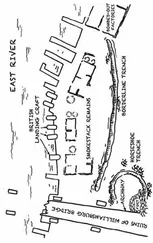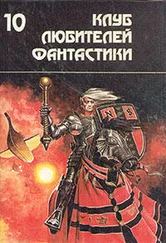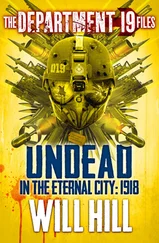I listened to many dashes. I would focus my whole attention, become all ears, to register their last signal. I’d hold my breath for as long as the long tone stretched. There’s nothing that can compare to the gravity of that span. When the tone ended, a young man had lost his life. I don’t know how to express the sadness and fright of those moments. Each time, it felt like a nail had been driven into my heart.
That tone is still engraved in my mind. I don’t know what hertz it was, but when I occasionally hear the same “sound” my whole body goes rigid, my heart starts hammering in my chest, and my knees give out. I don’t like listening to music. Sometimes there’ll be a long note that’s similar to that dash. As soon as I hear it, I’m done for.
___
You wanted to hear about Miyabe-san.
Yes, I remember him. He was an accomplished pilot, having served since Pearl Harbor. Everyone at Kanoya Base took off their hats to him.
To tell the truth, it had been my dream to become an aviator. I took the entrance exam for the Prep Program but unfortunately wasn’t accepted. I know that this is an inexcusable insult to those who died in the war, but actually I’m glad that I failed to get in. Had I been accepted, there’s no doubt I would have died a kamikaze.
Ensign Miyabe and I met frequently in the communications room.
Since he was a formation leader, he would come to the comm-shack to ask after the transmission status of scouting parties or attack units. Miyabe-san’s rank was ensign, but actually he was a “special duty” ensign. He wasn’t the type to swagger about like the officers from the Naval Academy and easily engaged rank and file like me in conversation, so I liked him.
Miyabe-san often flew escort for the kamikaze units that launched from Kanoya.
The escort fighters were not kamikazes. Their job was to defend the kamikazes from attacks by enemy fighters until they safely reached the other side’s aircraft carriers. I was just a radioman and didn’t know anything about airplanes. But I could imagine how difficult it must have been to fend off an overwhelming number of far superior fighter planes.
In fact, on each mission there were always members of the fighter escorts that failed to return. Sometimes none of them came back. While they weren’t kamikazes, they, too, were on special attack missions so to speak. By then even recon planes that had the benefit of speed didn’t always return.
I asked Ensign Miyabe about that once. “Are the fighter escorts then not in the same boat as the kamikazes, sir?”
“Not at all,” he flatly denied. “To be sure, under these circumstances the support aircraft have a really hard time, too. But at least we have a one-in-ten chance to return from the mission. We can fight for our survival, no matter how bleak the outlook. For the kamikazes, it’s zero-in-ten.”
Jusshi reisei. Death: ten, Life: zero. This was how the Shinpu Special Attack Force was described back then. The word “suicidal” is often used to mean “certain death,” but that isn’t always the outcome. With the special attacks, though, death was indeed the foregone conclusion. As the old saying goes, “Where there’s a will, there’s a way.” Zero-in-ten odds required an even stronger resolve than that.
___
The most tragic among the kamikazes were the members of the Divine Thunder Unit.
Those were the ones who manned the Ohka rockets. Among the many horrors of special attacks, none were as atrocious as the use of these. The human bomb Ohka would be loaded onto a Type 1 attack plane and sent off to its target. Who could ever conceive of such a preposterous tactic? When the first Divine Thunder Unit was deployed in early March, none of the eighteen Type 1s that sortied returned to base. Of the thirty Zeros that were in the fighter escort that day, ten didn’t make it back. Since there was a shortage of supporting fighters, many a commander and general staffer proposed to Vice Admiral Ugaki that he delay implementing the plan, but he brushed aside their concerns. Lieutenant Commander Nonaka, who led the squadron of Type 1s, apparently said before sortieing, “This is the stupidest battle plan ever conceived.”
That day, I waited for telegraphs from the Type 1s, yet not a single one came in. Not even the signal for spotting hostile fighters. The lack of any communications from them was bizarre since the Type 1s each had a dedicated wire operator on board. Even in an ambush, it was standard practice to wire “enemy fighters sighted.” But not a single telegraph came in from any of the eighteen aircraft.
A silent protest against the mission, I assumed, on the lieutenant commander’s part.
___
Yet, Divine Thunder Units were deployed many more times after that.
I believe this incident occurred in May. Ensign Miyabe had been ordered on his first Divine Thunder escort mission since his arrival at Kanoya. Six Zeros were deployed to back up six Type 1s. One of the Type 1s, tasked with guiding the formation, did not carry an Ohka. Ensign Miyabe looked unusually pale before he sortied that day.
His was the only plane that ever returned. He reported that all of the Type 1s had been shot down.
The ensign’s plane was covered in bullet holes. The tail, especially, was riddled with bullet marks. It was incredible that he’d made it back with his aircraft in such a state.
That night, when I left the comm-shack and was heading back to the barracks, I caught sight of someone in a flight uniform sitting alone on an embankment by the runway. It was a bright, moonlight night. The man was Ensign Miyabe.
When he noticed me, he waved. “Come sit with me, Murata,” he called out. That was my original family name.
“Thank you, sir,” I said, sitting down next to him.
It was then that I noticed that he smelled of alcohol. I looked over to discover a large-sized bottle of sake by his side.
“How about a drink?” he asked, grabbing the bottle and holding it out. “I don’t have any cups, so just drink from the bottle.”
“Thank you, but I’ll pass, sir. It’d be wasted on me.”
Ensign Miyabe didn’t seem particularly bothered by my refusal. He took another big swig straight from the bottle.
“The Ohkas will never succeed!” he spat. I was stunned by how loudly he’d said this. “It’s hard enough for the special attack planes to get close to their warships. There’s no way medium bombers weighed down by Ohkas could ever reach them.”
“It’s hard even for a special attack plane, sir?”
“The Americans spot us on their radar and launch huge numbers of fighters to ambush us. It’s not possible to break through with just a handful of escort fighters. Moreover, the special attack planes are loaded with heavy bombs. Their pilots are newcomers with little experience.”
“But there are some who make it to the enemy task force.” Since I was on the receiving end of their telegraphs, I refused to concede this point.
“Sure, there’s the occasional one that’s able to break through, but it’s barely one out of a few dozen. Over 2,000 kamikazes have sortied in the Battle of Okinawa. How many of those signaled that they were diving into their targets?”
I didn’t have an answer. I had personally heard dozens of strike signals, but out of 2,000 kamikazes that was still a dispiritingly small percentage.
“Even if they’re lucky and manage to dodge the interceptors’ attacks and make it to an aircraft carrier, they’re faced with intense anti-aircraft fire. I have witnessed a number of planes take that final plunge, and I can’t even begin to describe how fierce their anti-aircraft barrage is. It was impressive enough at the time of the Battle of the Solomon Sea, but the Americans have far greater AA power now. Headquarters has no idea what the actual conditions are like. Or maybe they do and are just feigning ignorance.”
Читать дальше

![Nick Cracknell - The Quiet Apocalypse [= Island Zero]](/books/28041/nick-cracknell-the-quiet-apocalypse-island-zero-thumb.webp)










